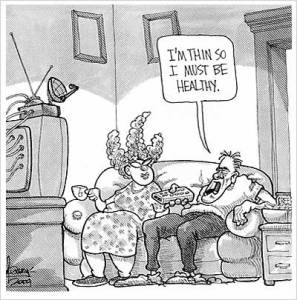 The CDC ranks Alabama as the 2nd heaviest state with 30.3 % of the population having a BMI of over 30. The state has decided to give state employees a lose weight or pay ultimatum. The state employees (~40,000) have a year to lose weight or start paying $25 a month toward their usually free plan. The Alabama program will go by the body mass index chart — anyone with a BMI over 35 will be charged.
The CDC ranks Alabama as the 2nd heaviest state with 30.3 % of the population having a BMI of over 30. The state has decided to give state employees a lose weight or pay ultimatum. The state employees (~40,000) have a year to lose weight or start paying $25 a month toward their usually free plan. The Alabama program will go by the body mass index chart — anyone with a BMI over 35 will be charged.
Alabama, which already charges smokers, will be the first state to charge overweight state workers who don’t work on slimming down, while a handful of other states reward employees who adopt healthy behaviors. The State Employees’ Insurance Board this week approved the plan to charge state workers starting in January 2010 if they don’t have free health screenings.
If the screenings turn up serious problems with blood pressure, cholesterol, glucose or obesity, employees will have a year to see a doctor at no cost, enroll in a wellness program, or take steps on their own to improve their health. If they show progress in a follow-up screening, they won’t be charged. But if they don’t, they must pay starting in January 2011.
William Ashmore, executive director of the State Employees’ Insurance Board, said research shows someone with a body mass index of 35 to 39 generates $1,748 more in annual medical expenses than someone with a BMI less than 25, considered normal.
“It’s terrible,” said health department employee Chequla Motley. “Some people come into this world big.”
“The state will feel good about itself for offering something and the person of size will end up paying $300 a year for the bad luck of having a chronic disease his/her state-sponsored insurance program failed to cover in an appropriate and meaningful fashion,” said Walter Lindstrom, founder of the Obesity Law and Advocacy Center in California.
Computer technician Tim Colley already pays $24 a month for being a smoker and doesn’t like the idea of another charge. “It’s too Big Brotherish,” he said.
E-K. Daufin of Montgomery, a college professor and founder of Love Your Body, Love Yourself, which holds body acceptance workshops, said the new policy will be stressful for people like her. “I’m big and beautiful and doing my best to keep my stress levels down so I can stay healthy. That’s big, not lazy, not a glutton and certainly not deserving of the pompous, poisonous disrespect served up daily to those of us with more bounce to the ounce.”
The major problem I have with this idea stems from a recent study that showed that ~70% of “obese” people and about ~24% of “normal” weight people have health conditions that were commonly associated with obesity. Weight serves as an indicator of health but it does not appear to be the best indicator of health. Since they screen everyone, simply charging those with health abnormalities might be the fair way to approach this issue.
It should be interesting to see how this ends up.
 Most of the lessons we learn in life oftem come from some form of adversity. Knowing that all of us on this planet come across difficulties can help us strategically face it. Realizing the answers lie within us can motivate great things to result from these adverse conditions. Throughout your many years of existence you have faced many situations and come out on top, why should this be any different.
Most of the lessons we learn in life oftem come from some form of adversity. Knowing that all of us on this planet come across difficulties can help us strategically face it. Realizing the answers lie within us can motivate great things to result from these adverse conditions. Throughout your many years of existence you have faced many situations and come out on top, why should this be any different.
 The CDC ranks Alabama as the 2nd heaviest state with 30.3 % of the population having a BMI of over 30. The state has decided to give state employees a lose weight or pay ultimatum. The state employees (~40,000) have a year to lose weight or start paying $25 a month toward their usually free plan. The Alabama program will go by the body mass index chart — anyone with a BMI over 35 will be charged.
The CDC ranks Alabama as the 2nd heaviest state with 30.3 % of the population having a BMI of over 30. The state has decided to give state employees a lose weight or pay ultimatum. The state employees (~40,000) have a year to lose weight or start paying $25 a month toward their usually free plan. The Alabama program will go by the body mass index chart — anyone with a BMI over 35 will be charged. 

